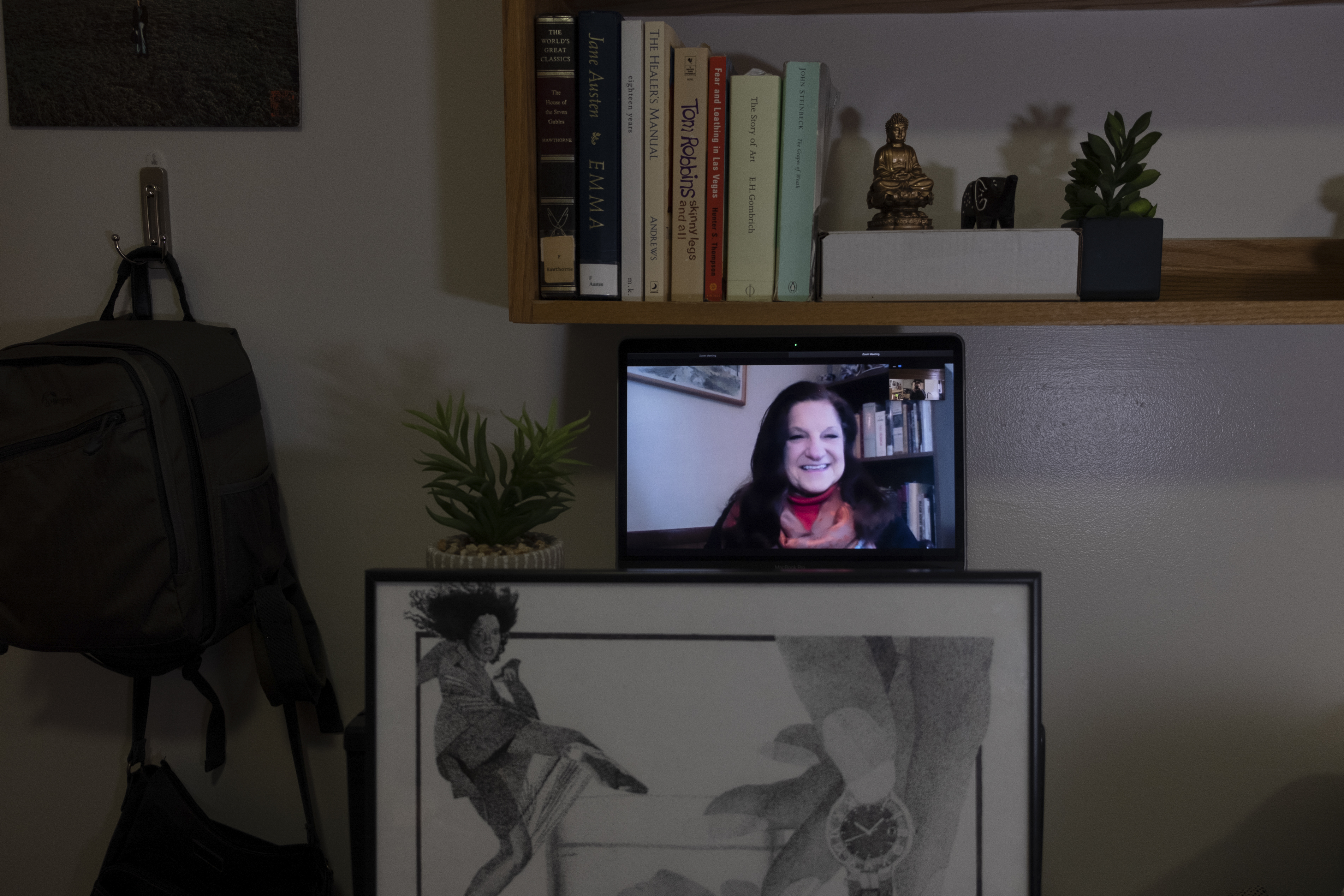

A Plethora of People
A Plethora of People
Highlighting voices from several corners of Syracuse who are working to make this world a more equitable place.

he Deconstructing the Divide team spoke with people on campus and in the community who are working in their individual fields to make this world a more equitable place. From literature professors and architecture students to artists and football coaches, the profiles below highlight eight people coming from a range of backgrounds. They are connected by one thing: a passion to make a difference.
A Language Teacher
Maria Jolanta Para, English language instructor, draws on personal experiences to connect with international students at SU.
When Maria Jolanta Para was in kindergarten, her mother had first dibs on her English homework.
The daughter of Polish immigrants, Para remembers her parents’ experience learning English and the sheer thirst for knowledge required for an adult to diligently complete assignments designed for a six-year-old.
“I look at my parents — they speak English now, but the amount of patience that they had, and fearlessness that they had to have, I see that in my students,” Para said. “I have this incredible amount of respect for them.”
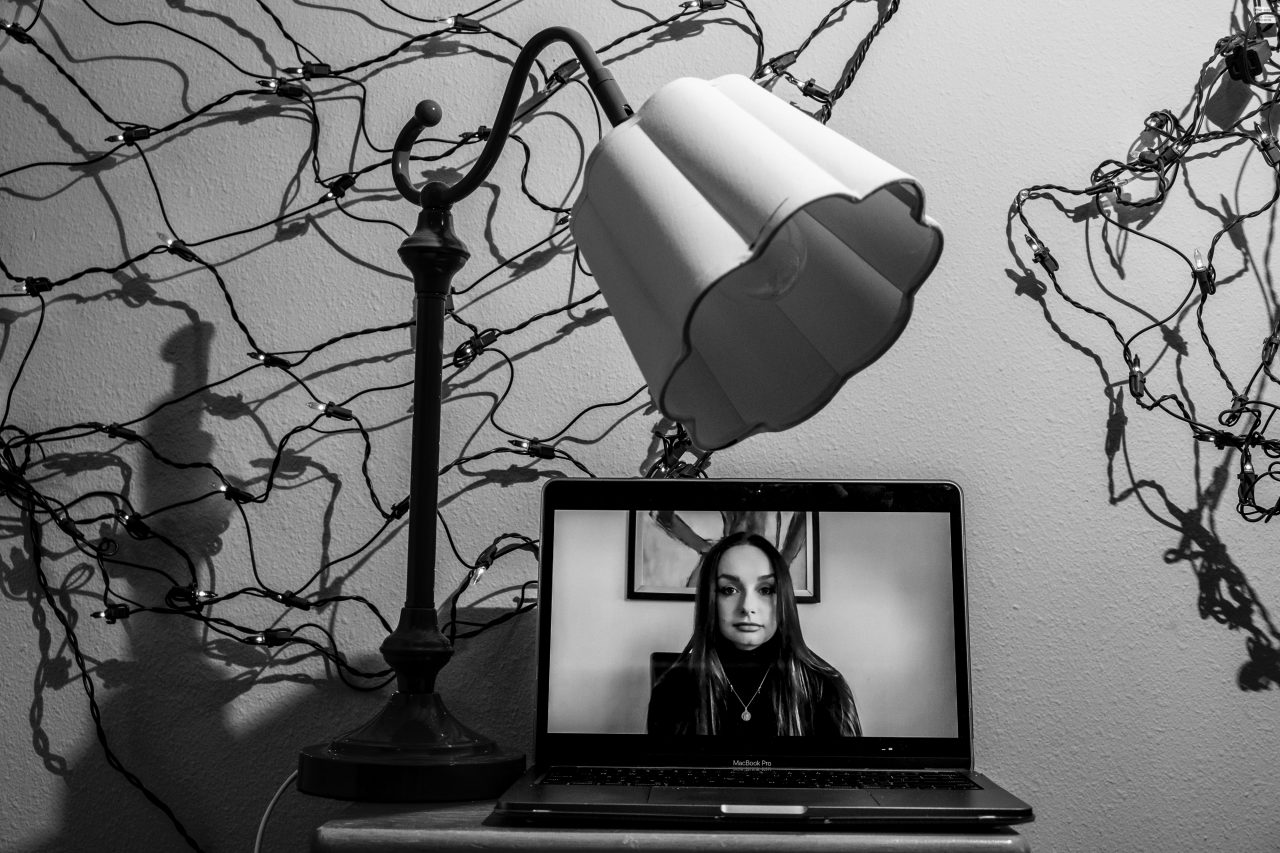
Para has instructed for two years at the English Language Institute at Syracuse University, where international students can learn English before enrolling in classes at the university. She graduated from SU in 2018 with a linguistics degree and accepted a part-time job in the linguistics department teaching an English course for Non-Native speakers.
Just as Para began to fall in love with teaching English to international students, a full-time job opened up in the ELI, and she’s been teaching ever since.
“Teaching English literature, or writing, or presentation skills — in addition to American culture and learning about a student’s culture — is just beyond anything that I would ever want,” Para said. “I can’t really picture myself doing anything else.”
The ELI teaches English at five levels of ability, from a class for those who can’t speak any English, to one for those that are almost ready for regular instruction in SU classrooms. The three components of instruction are writing, grammar, and speaking.
Along with the language instruction comes cultural instruction: places to go around Syracuse, do’s and don’ts in a lecture hall, class presentation, public speaking practice, and more.
Para works with students young and old, each arriving in Syracuse with a different level of English proficiency — and each with a different story.
“I’ve had students that are in their 50s, I’ve had students that are well-known optometrists in their villages or towns, and they’ve been doctors for 20 years, and then they come here because they want to be a doctor in America,” Para said. “So it’s easy to see an international student or an international person and be like ‘I already know your story,’ but it’s just so much more than we could ever really imagine.”
In addition to teaching, Para runs the Conversation Partners Program, which pairs 30-45 international students with American students. The partners meet weekly to talk for an hour about whatever topics they want.
The program gives international students a chance to practice their casual English and small talk, which can’t fully be taught in a classroom.
Para said there is a misconception that international students want to be left alone. In fact, those who join the program are grateful for the opportunity to shoot the breeze.
“They do want to talk, they want to get to know the culture, they want to get to know slang, they want to be able to participate,” Para said.
American students stand to learn from their conversation partners as well. Para hopes that, through conversation, students will learn about each other’s cultures and, in the process, become more connected with their international peers.
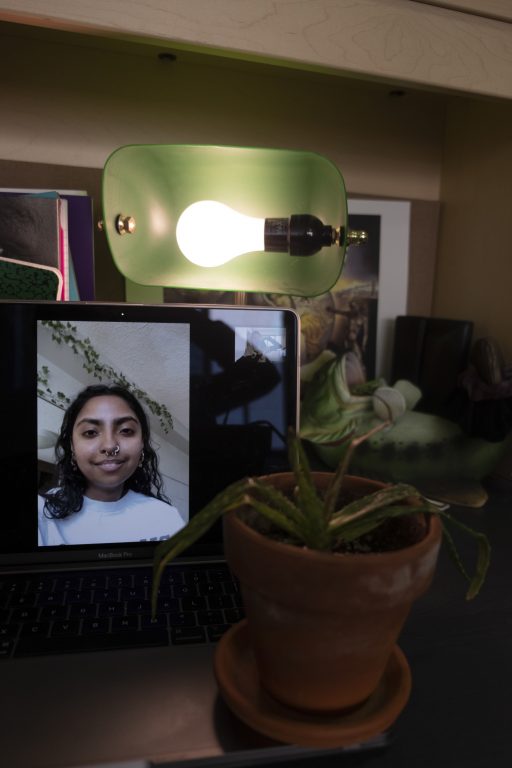
An Architect in Training
Megha Ullin uses architecture to combine artistic and practical creativity and enhance community spaces.
In architecture, “form follows function” is a governing maxim, but for Megha Ullin, community space is the most important design consideration.
A sophomore in SU’s School of Architecture, Ullin has found a way to merge her artistic interests with the rationality of engineering. Architects infuse their own unique styles into designs, but rather than making a dramatic artistic statement, Ullin’s style is one of practicality. Her first influence was the fictional Gogol, the Bengali American architect protagonist of Jhumpa Lahiri’s novel The Namesake.
“I read it in high school before I wanted to go into architecture school, and I could really relate to him,” Ullin said.
Ullin, who is also Bengali American, related so much to Gogol’s experiences that she began to consider his career, architecture, as a possible path for herself.
Now, one of Ullin’s biggest influences is an Italian architect and designer, Ettore Sottsass. His style resembles dreamscape architecture, balancing cartoonish aspects with semi-realism.
In her own designs, though, Ullin focuses on creating community spaces rather than making an artistic statement.
“Creating friction within spaces or buildings so that people have the chance to hang out, spend time together, just be part of the community within the space,” Ullin said.
Friction means people having to interact with each other, and Ullin’s focus on community in design bleeds into her everyday life.
Last year, Ullin quickly found a place for herself on campus, making friends and working with other architecture students. She was also involved with the South Asian Students Association, Habitat for Humanity, and the National Organization of Minority Architects.
The architecture program benefits from a shared work environment, in which students can see what their peers are working on and help each other. Online classes can’t recreate that sense of community.
“Within Syracuse architecture, the community is really nice; everyone is really accepting, everyone knows everyone, your peers try to help you a lot, it really does feel like a community,” Ullin said.
Some architecture schools have reputations for harsh work environments in which students refuse to help — and even sabotage — their peers. The differences between these architecture programs and SU’s are night and day.
“Even though we have such a big program, and architecture is such a competitive field to get into, people are still willing to help.”
Ullin was quick to admit, though, that the positive experience of students in the architecture program is not necessarily shared among others on campus.
“My roommate last year, she was a big part of the #NotAgainSUmovement, and her experiences were so different from mine,” Ullin said.
Even within the architecture program, Ullin said people could do more to foster inclusivity, specifically with international students.
Although she’s not an international student, Ullin understands part of their experience; she said that sometimes on campus it feels as though other people see her brown skin, assume she’s an international student, and don’t engage with her.
“People aren’t making the effort to go and talk with them because they’re assuming, oh they’re international students, they just want to be with other international students.”
On campus, just as on canvas, Megha Ullin wants more friction.
A Filmmaker
Jenn Kim uses film to promote inclusivity, but her time at SU has been fraught with exclusion and marginalization.
Jenn Kim has always had a love for film, but her time at Syracuse University’s College of Visual and Performing Arts has been more complicated.
A junior in the film program, Kim said her love for film started at a young age. Initially, she wanted to become an actress on the Disney Channel, but producing and editing content for a morning announcements class in middle school inspired her to pursue a career on the opposite side of the camera.
“That’s when I realized that I liked editing,” Kim said. “I thought it was fun and I thought it was cool and that’s when I decided I want to work behind the camera.”

Kim saw New York City colleges as a potential escape from the suburbs of Sacramento, California, but ultimately she enrolled in SU’s film program.
Kim said she isn’t working on any personal film projects at the moment, but she still feels artistically fulfilled from her extracurricular pursuits. She writes for Jerk magazine and a podcast called “Hit and B—-” that she co-hosts with her friends. On top of that, Kim frequently finds herself helping out on set for her friends and fellow film students.
As diversity chair of Delta Kappa Alpha, SU’s professional cinematic fraternity, Kim hosts diversity panels and facilitates conversations on diversity, representation, and inclusion problems in the entertainment industry.
She interns at The Creative Process, a nonprofit traveling art exhibition and collective that promotes work from artists, writers, and filmmakers from around the world, including students. Kim edits the collective’s podcast, among other duties.
“I write for their collective on Medium; I can pretty much write about anything,” Kim said. “I try to promote other artists on campus.”
Though Kim works to improve the experiences of others, her own time at SU has been a mixed bag. A lack of diversity in the curriculum and a dearth of funding for the film program negatively impacted her first few semesters.
“Going to a predominately white institution, it’s interesting,” Kim said. “I realized these things affect my life more than I thought they would.”
Outside the classroom, Kim’s time at SU has been marked by last year’s spree of hate crimes and subsequent #NotAgainSU movement.
While she didn’t expect SU to be an accepting utopia, Kim was nonetheless shocked to witness a slew of such intense hatred coming from her own student body. Kim said it was embarrassing to see SU in news headlines for hate crimes.
As a queer woman of color, Kim understands what it means to be marginalized. She labors toward inclusivity and community mindfulness.
“People don’t realize how much we affect the community — not just on campus, but literally Syracuse as a whole,” Kim said. “Just listen to other people. And just freaking care about people.”
Kim has had some good times here, too, like exploring the different parts of Syracuse and trying new restaurants. Kim said she thinks some students are afraid of straying too far from campus but is confident that if those students do venture out of their comfort zones, they will be glad they did.
“If you’re being as safe as possible then yeah, I would totally encourage other people to go out more, and then I would hope that the university does that, too,” Kim said. “There are so many little hidden places that you can go.”
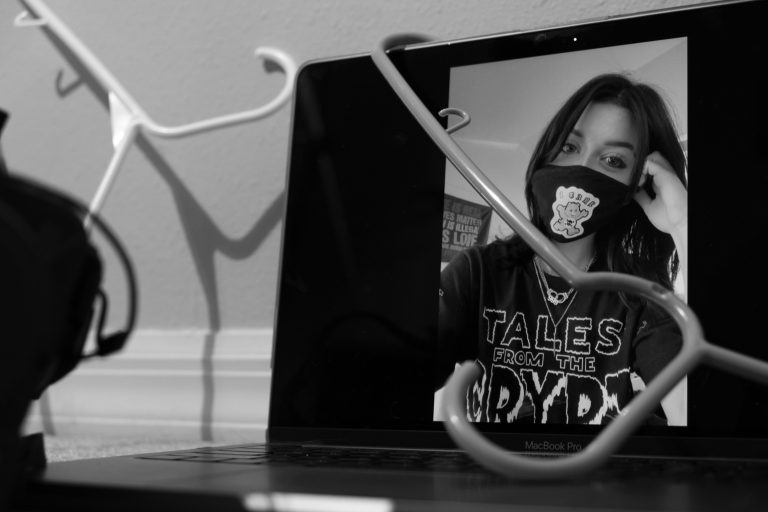
An Influencer
Shockey Sanders, a neuroscience student, amassed a large online following while juggling schoolwork and extracurricular activities.
Science and Syracuse run in Shockey Sanders’s blood, but being a content creator on social media took some getting used to.
A sophomore in the school of Arts & Sciences at Syracuse University, Sanders is double majoring in neuroscience and psychology. With a father who studied at SU and a grandmother who attended the women’s school at SU, Sanders has grown up with strong Syracuse ties.
Sanders’s love for SU’s campus is rivaled only by her passion for neuroscience. Specifically, Sanders is interested in psychopharmacology and holistic drug research, which aim to construct treatments that address problems with more than a prescription.
“I actually went to a university high school where I was in a medical magnet program where I graduated with my EMR certification. So I did have that medical background already,” Sanders said. “Also, my dad is a chemist, so it kind of just runs in my blood to be in science.”
Even though Sanders always saw Syracuse and science in her future, she never anticipated that college would allow her to add “social media influencer” to her resumé.
Last August, Sanders found time between schoolwork and Sunday music lessons for SCSD students to begin modeling with Victoria Secret Pink. Since then, she has amassed a large following on Instagram and TikTok, which prompted the subsequent release of her clothing line.
“I had a lot of requests to make merch, like, stuff with my name on it,” Sanders said. “But I wanted to do something that was consumable to people who may not necessarily even like my content, or regularly engage with my content.”
She is enjoying her new career as an influencer, designer, and model, but balancing school and business is not easy. Sanders doesn’t plan to continue her social media pursuits after graduation.
“As fun as it is right now and as great as it is for me to be doing right now, I still need to stick to my goal of you know getting my doctorate and following through with that.”
Along with her new fashion endeavors, Syracuse has brought other changes for Sanders. For one thing, the drastic changes in season are a pointed change from Tampa’s equilibrium.
But the weather here isn’t the only thing different than Tampa; Sanders said she appreciates the Syracuse community’s political and social leanings.
“I enjoy being up here because I can dress as I want, wear my makeup as I want, and it’s just looked at as normal,” Sanders said. “It’s not like you’re an anomaly if you want to wear a kind of eccentric outfit, which I really enjoy.”
SU has put Sanders in contact with a community of other art and fashion enthusiasts, some who share her tastes and others with their own styles– and she’s connected with the broader SU community, too. Sanders said one of her best moments at SU so far was being on the quad with so many other students on the first warm day of Spring.
“I’ve had a great experience here being accepted for the different things that I do,” Sanders said. “It’s also opened up a lot of opportunities for me that I wouldn’t have gotten back home.”
A Story Studier
Patricia Burak uses Russian literature to expand her students’ horizons, bridge cultural divides, and catalyze strong debate.
As Patricia Burak opens her hardcover copy of Fyodor Dostoevsky’s Brothers Karamazov to read from the introduction, the book falls apart. She says that this is the fourth time it has broken, then swaps to a backup paperback copy and begins reading.
“This one doesn’t have all my highlights in it, either,” Burak says.

Such is the life of a devoted Russian literature professor. Burak, a 68-year-old Syracuse native and graduate of Henninger High School, has taught at Syracuse University since 1984 and has read Brothers Karamazov cover to cover almost 30 times. She rereads the novel with her class in her LIT 226 course “Tolstoy and Dostoevsky,” in which she also teaches her favorite book, Tolstoy’s Anna Karenina.
Burak is the granddaughter of Ukrainian immigrants and grew up immersed in Slavic culture, but it was a Tolstoy course at SUNY Oswego that truly initiated her fascination with the Russian literary tradition. In 1980, she began taking part-time courses at SU in Russian literature and linguistics, and after 13 years, received a Doctorate of Arts in the subject.
Burak said that storytelling, oral and literary, has always been a foundational component of Slavic culture.
“People were storytellers, they were always storytellers,” Burak said. “That tradition is so deeply embedded in Russian literature that anyone who cares to engage can learn something about life by reading Russian literature.”
For over 30 years, Burak also served as the director of the Sluztker Center for International Services, for which she received a lifetime achievement award from the Association of International Educators. She stepped down from her post in 2018 in order to teach literature full-time. Among other responsibilities at the center, Burak served as an advisor counselor for international students, a role that saw her constantly interacting with different cultures.
Burak brings that holistic cultural perspective to her literature courses. She strives to demonstrate to students that all cultures, regardless of intricacies and distinctions, share universal experiences and basic principles — and that the study of literature is the best way to understand these components of the human experience.
“People have different attitudes about the literature, but almost every student at the end of the day —at the time when they would write their evaluations about the course — would say that it gave them something deeper in their life,” Burak said.
Each student makes their own conclusion about the complex characters within the assigned texts, which makes for lively classroom discussions.
Sometimes, the debate isn’t about characters, but rather, the author. She recalled how in the 1980s, Russian international students would come to her office and asked, bewildered, “Why are you teaching Solzhenitsyn? We never read Solzhenitsyn!”
Alexander Solzhenitsyn’s novels like In the First Circle and A Day in the Life of Ivan Denisovich drew on the author’s eight years spent in a gulag and were so critical of the government that the Soviet Union stripped him of citizenship in 1974.
Shortly before Solzhenitsyn’s death in 2008, Burak managed to nominate him for an honorary degree from SU, one of only two such honors he ever accepted.
“To my mind, that was the epitome of my blending my careers, Russian literature, and international education,” Burak said.
Burak said she understood the perspective of those Russian students but would insist on the value of Solzhenitsyn’s work. She would talk to those Russian students for hours — often losing track of time — and to her, this is exactly what good literature ought to do: start debates and discussions between passionate readers searching for higher truth.
An Art Activist
Andy Mager leverages art to support social justice activism across the country through his non-profit, Syracuse Cultural Workers.
Social movements need signs. And in Central New York, Andy Mager and his coworkers at Syracuse Cultural Workers are the sign-makers.
Mager, 59, is a sales manager and social movements liaison for the small business, which publishes calendars, posters, cards, t-shirts, and other products related to sustainability, social justice, and peace. Located on Lodi Street, Syracuse Cultural Workers has supplemented local activism since its founding in 1982. It grew out of the work of the Syracuse Peace Council, a local community organizing activist group.
“There’s a rich history in Syracuse and the broader [Central New York} community, of people standing up and acting for justice, so we are very proud to be part of that tradition,” Mager said.
Mager, who grew up on Long Island, has been connected to SCW since 1982 and began working on staff in the summer of 2014. He works on wholesale accounts with 400 stores nationwide and is also a member of the creative team responsible for product development.
“We’re a completely mission-driven business so that our purpose for existing is to support organizations and movements and people working to make progressive social change,” Mager said. “So we think it’s very important that the messages on our products reflect that mission and those values.”
The vast majority of SCW products are created and produced here in the US. Producers often incorporate union labor in the finished product, and the organization will not support products manufactured in sweatshops.
Mager is not one of the primary designers at SCW, but described art as a fundamental part of human culture.
“I don’t define myself as an artist so much, but I have always had a passion for social justice, and have always understood that images are a powerful and important way to convey information,” Mager said. “So yes, I believe in the power of art and duty to help people understand the world, and hopefully to understand the experience of other people different from themselves.”

The influence of powerful imagery was demonstrated this summer, when “Black Lives Matter” and “In Our America” signs — both SCW products — became ubiquitous across the city of Syracuse.
“There weren’t lots of them that you saw here in Syracuse until this summer, as people began to respond to the murder of George Floyd and wanted to raise their voices in solidarity,” Mager said.
This summer may have been the first time many Syracuse residents took action in support of Black Lives Matter, but it certainly was not for the folks at SCW. Since 2016, the business has paid royalties for all of the BLM-themed products that it has sold to the local Syracuse BLM chapter.
SCW’s work isn’t confined to the city; during the #NotAgainSU protests on SU’s campus, SCW rallied support for student demonstrators and encouraged folks to lobby Chancellor Kent Syverud to negotiate in good faith with the students.
Mager said the key to making a change in Syracuse is for people to come together in their communities, organize, and find ways to pressure the city government, following the example of concerned Syracusans who protested for the removal of the divisive Christopher Columbus statue downtown.
“It’s easier to swap out a statue than it is to transform an economic and social system which has disenfranchised people for many many decades,” Mager said, “But nonetheless, we remain confident that we can make the changes that are needed.”
A History Maker
Jessica Elliot, a Syracuse resident and SU doctoral candidate, reflects on divisions between the campus on the hill and city just blocks away.
Jessica Elliot isn’t just passionate about Black history; she is Black history.
At Nottingham High School, she introduced the first African American history course in the Syracuse City School District; it is now taught district-wide. As director of programming for the Dunbar Association, the oldest Black organization in Syracuse, Elliot works to improve the quality of life for people in her community. When she finishes her dissertation, she will become the second Black woman to receive a doctorate in the subject of history from the Maxwell School at Syracuse University and the first to specialize in American history.
“How long has this university been in existence?” Elliot said. “Why am I the first?”
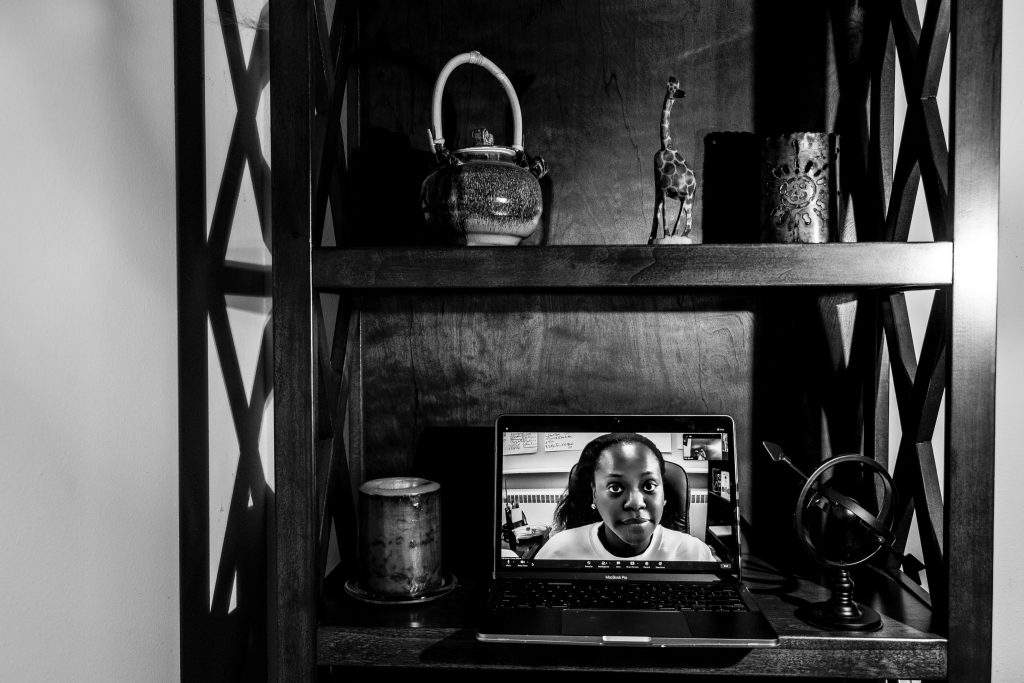
In spite of the university’s commitments to diversity, Elliot said her historic degree demonstrates the disconnect between SU and the Black residents of Syracuse.
“The city is the town, SU is the gown. The gown never wants to get dirty, the gown wants to protect itself,” Elliot said. “I’m saying that primarily because that is the lived experience of all of the Black people who live at the bottom or around that hill.”
With her dissertation, Elliot looks to examine that experience. Her project concerns African American migration to northern cities, a history that traditionally focuses on larger cities like Chicago, Philadelphia, and Detroit.
Elliot’s dissertation centers on the Black people who came to Syracuse, the Black spaces that developed and flourished, and the subsequent segregation and destruction of areas like the 15th Ward.
“Most of the space where that campus is used to be a Black space,” Elliot said, “but because of urban renewal, because of the policies set forth and put into practice by [former] Mayor [James] Walsh, those black spaces are gone.”
This destruction directly benefited SU, and contributed to the barriers between SU’s campus and the surrounding predominantly Black neighborhoods. Elliot believes that SU actively maintains these divisions.
“There is a very clear ‘Do Not Enter’ sign on that campus if you are Black, and if you are from this city,” Elliot said. “We understand very, very well that we are not wanted on that campus. I just happen to do what the hell I want to do, and nobody’s going to tell me that I can’t go anywhere.”
Elliot, remembering a class trip with Nottingham students to SU campus, said a Department of Public Safety officer approached her and her class, many of whom were Black, to ask her what they were doing on campus.
“Very early on, they’re made to feel like they’re not wanted there,” Elliot said.
The university contributes to this harmful perception in multiple ways: DPS text alerts, signs on campus near black spaces declaring “this area is under surveillance,” and rhetoric on campus that encourages students to avoid areas that order Black spaces, such as Thornden Park.
“You have to pay attention to how the media plays into larger policies and larger practices that are happening in the city,” Elliot said. “You’ve got people on the campus who are told not to come to the South Side because it is a Black space, period.”
Elliot maintains that correcting historic wrongs in Syracuse requires institutional change, and places the onus on the white beneficiaries of racist systems.
“Black people weren’t consulted in creating systems of racism and discrimination, so it shouldn’t fall to us to deconstruct them,” Elliot said.
A Football Coach
Curtis Chaplin doubles as an activist and a football coach for young children, inspiring the entire community.
A pack of young athletes with flags attached at the hip motor around Thornden Park’s football field. The road above is lined with parked cars, containing attentive parents who survey the action below. Among the dozen young players ripping towards the end zone, runs a tall, broad-shouldered man: their coach, Curtis Chaplin.
The founder of Option Zero, Chaplin is a veteran and boxer who created a program to mentor kids by teaching life skills through athletic endeavors. Option Zero uses boxing and football to reinforce discipline, work ethic, and self-control in children.
Coming out of the National Guard, Chaplin founded the gym in 2014 after he began training with the goal of becoming a professional boxer.
Since then, he has shifted his focus from being the fighter in the ring toward being the coach in the corner. There are about 40 children currently enrolled in the program, and he has begun offering adult classes.
Option Zero offers a vital chance for kids to be carefree and play outside. Chaplin said the program also provides a productive outlet for the anger and aggression that all children naturally have.
“Why do we condemn people for being who they naturally are?” Curtis asked, explaining his belief that all humans have a violent streak in them. Without a productive outlet for violent thoughts, this rage can boil over.
“I’m not an advocate for stopping the violence,” Chaplin said. “I say, use the violence in a more constructive way.”

Option Zero is about more than just violence and aggression, though. Many parents sign their children up because they want them to learn self-confidence, among other things.
Chaplin earned local renown this summer as a fledgling leader of the Last Chance For Change (LCFC) movement, a Syracuse-based group that formed in the wake of George Floyd’s murder in May. The group organized protests against police brutality, gathering hundreds of protesters to march for 40 days straight. And for 40 days, Chaplin could be seen heading up the march, tirelessly working for the children of his community.
Deconstruction the Divide
Chaplin is proud that, by the end of summer, LCFC successfully petitioned the city of Syracuse to meet its demands. A man of direct action, Chaplin said he wants to keep pushing for true police reform. But he acknowledged that he is a role model and he doesn’t want his kids to see their coach in jail, even for a good reason. Anyone can go to jail for civil disobedience, Chaplin reasoned, but not just anyone can teach boxing classes.
“Let me just focus on this young group of leaders and help them so that when they hit our age, they don’t have to do this because they’ve already put their foot down that they’re not going to tolerate it,” Chaplin said.
This is the essence of Chaplin’s mentality: Lead him, follow him, or get out of his way.
Chaplin said that friends and others in his community have celebrated his activism, but the coach wonders why more people don’t get involved the way he has. Taking time out of one’s own day, and money out of one’s own pocket to help others may not sound desirable, but for Chaplin, investing in his community is the only option.
“Talking only gets you so much, you know?” Chaplin said. “Talking without action, it’s just words.”
